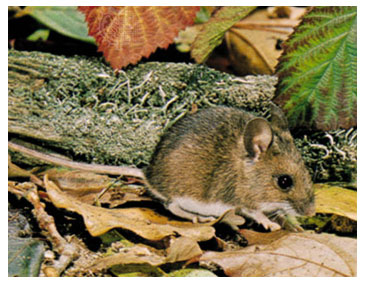

Mice are “gnawers” or “nibblers” by nature and thus tend to make small holes or other slight damage in many places rather than a lot of damage at one place. The mouse has keen senses of touch, smell and hearing although it does have rather poor eyesight. It can run, climb, jump and swim very well.
Field mice often invade homes, yards and gardens in the winter seeking food and shelter. They eat about the same food as humans, including cereals, seeds, fruits and vegetables and are especially fond of sweet liquids. Because they nibble, they may feed as often as 15 to 20 times each day consuming only a small amount of food each time. Mice can survive on as little as 1-mililiter of water per day which they can often get from their food.
Mice can transmit diseases such as Rat-bite fever, Weil’s Disease, salmonella, Murine typhus, Rickettsialpox and are vectors for Lime Disease. Mice cause a great deal of damage to materials which they destroy and, because of their habit of nibbling, contaminate much of the material which they do not actually destroy.
In addition to environmental sanitation, mice can be controlled by the proper use of snap traps, live-catch traps, toxic baits labeled for such use and by making structural modifications to exclude mice from buildings.